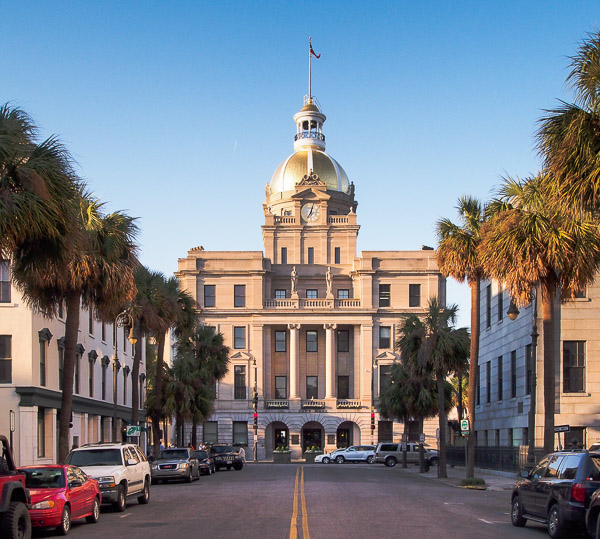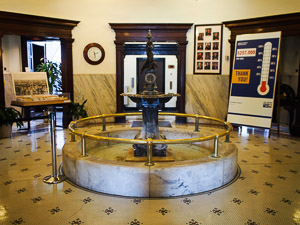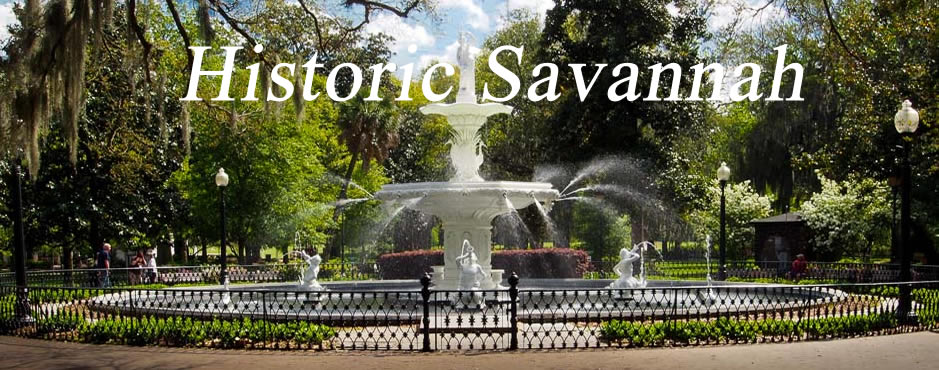 City Hall
City Hall
City Hall
 City Hall
City Hall
City Hall
Savannah, GA 31401
General James Oglethorpe landed on a bluff (now known as Yamacraw Bluff) overlooking the Savannah River in 1733. Along with him were the first group of colonists who would establish the City of Savannah and the last of the 13 colonies of England.
City Hall was designed and built by local architect Hyman Wallace Witcover in 1901 on Yamacraw Bluff which is the same bluff where General James Oglethorpe had landed in 1733. City Hall is a Renaissance Revival building with classic proportions and detailing.

Lobby in City Hall The exterior building material changes at the Bay Street level to a four foot high skirt of polished granite. Then the building is divided into three major levels. The first floor exterior is made of smooth granite with deeply recessed joints. The second and third floors make up the second level which is sheathed in sand colored limestone with matching terra cotta trim. The fourth floor and dome base, constructed of the same materials, make up the final level. Two statues representing art and commerce adorn the fourth floor balcony. The dome rises 70 feet into the air. It was originally clad in copper but was gilded in 1987. The $240,000 project was a gift from a local philanthropist. Tissue-paper thin sheets of 23-karat gold leaf were applied to the dome, cupola, and clock hands.
Just outside the main entrance are two tablets, place in 1918, to commemorate Savannah's importance to the maritime industry. One tablet marks the 100th anniversary of The Savannah, the first steamship to cross the Atlantic. The second tablet commemorates The John Randolf, the first iron vessel seen in the Americas. The John Randolf was assembled and launched from Savannah in 1834.
As you enter City Hall from Bay Street through a foyer that leads into a dramatic rotunda reaching four stories and peaked by a leaded glass dome of yellows, golds, and blues. Eight equally spaced windows belonging to an outer dome provide natural light to the stained glass.
White tile is used on the floors in both the foyer and the rotunda; however, different shaped tile and patterns are used to articulate each space. The seal of the City of Savannah is laid in the tiles of the foyer. The main floor rotunda's central feature is a circular fountain surrounded by a simple brass railing. It is highlighted by a bronze fountain composed of four dolphins with backs arched so that their tails extend above their heads to support a cherub sitting upon four large scallop shells. In his hands rests a horn of plenty.


